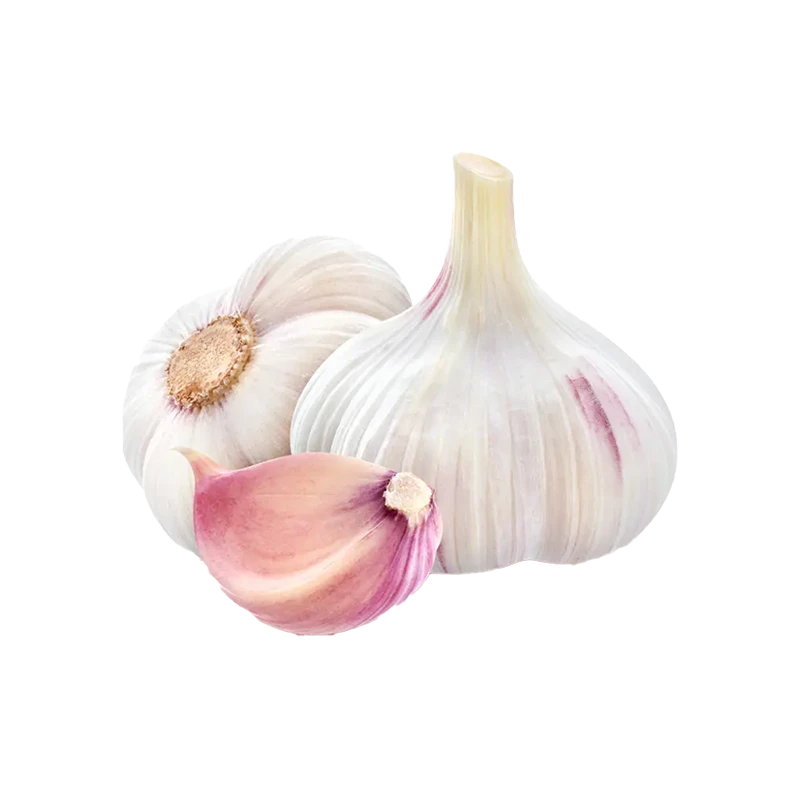Garlic — Nutrients, Health Benefits, And Shopping Tips

Written by Listonic Team
Last update on September 4, 2024
Nutrition facts
Nutrition facts
Amount per 100 g
Calories
🔥 149 kcal
| Nutrition per: 100 g | Value | % Daily Value* |
|---|---|---|
| Carbs | 33 g | 12% |
| Fiber | 2 g | 7.14% |
| Sugars | 1 g | 2% |
| Glycemic Index | 30 | - |
| Protein | 6 g | 12% |
| Sodium | 17 mg | 0.74% |
| Total Fat | 1 g | 1.28% |
*The % of Daily Value (DV) tells you how much a nutrient in a serving of food contributes to a daily diet. 2,000 calories a day is used for general nutrition advice.
30
🟢 Low Glycemic Index
1 g
🥕 Low Fat Content
Did you know?
Health benefits
- Contains powerful antioxidants such as allicin, which help protect the body from free radicals and reduce inflammation.
- Supports immune function due to its antibacterial, antiviral, and antifungal properties.
- May improve heart health by lowering blood pressure, reducing cholesterol levels, and improving blood circulation.
- Supports digestive health by promoting the production of digestive enzymes and reducing symptoms of indigestion.
Health risks
- Risk of digestive discomfort such as heartburn, gas, or stomach pain, particularly when consumed in large quantities or by individuals with sensitive stomachs.
- Potential for allergic reactions in some individuals, causing symptoms like itching, swelling, or difficulty breathing.
- Potential for bad breath and body odor due to the sulfur compounds in garlic, which can linger after consumption.
- Interaction with blood thinners as garlic can have mild anticoagulant effects, potentially increasing the risk of bleeding when combined with blood-thinning medications.
How to choose garlic
Fresh garlic bulbs should be firm and heavy, with dry, papery skins. Press on the cloves; they should not yield to pressure, indicating they are not past their prime.
Reject any garlic bulbs that have soft cloves or show signs of sprouting, as these will have a diminished flavor. Proper garlic should have a pungent smell and add a sharp, slightly spicy taste to dishes.

How to store garlic
Whole garlic bulbs should be stored in a cool, dry place with good ventilation. A mesh bag or basket works well to maintain freshness. Properly stored, garlic can last several months.
Refrigerating garlic can cause it to sprout and become bitter. It's important to avoid storing it in sealed plastic bags or containers. Ensure it is kept dry and away from moisture to prevent mold growth and spoilage.
✅ Extra Tip
How long does it last?
Garlic can last for 3-5 months when stored in a cool, dark place with good ventilation. Once peeled, it should be refrigerated and used within 1-2 weeks.
What to do with leftovers?
Leftover garlic can be used in a variety of dishes to add bold flavor. Chop or mince it and sauté with olive oil as a base for soups, stews, or sauces, where it adds depth and aroma. Garlic is also great when roasted, creating a sweet, mellow flavor that can be spread on bread or added to mashed potatoes.
Use garlic in a stir-fry with vegetables and your choice of protein, or mix it into a marinade for meats or vegetables. If you have a lot of garlic, consider making a batch of garlic confit by slowly cooking garlic cloves in olive oil, then using the oil and garlic in various dishes. Garlic can also be blended into a pesto with basil, nuts, and Parmesan cheese, or used to flavor butter or sauces for bread and pasta. For a quick snack, roast garlic cloves until soft, then spread on crackers or toast with a sprinkle of salt and herbs.
👨⚕️️ Medical disclaimer
Discover products from other categories
Listonic Team
Fact-checked
Our editorial team checked this article to make sure it was accurate at the time of publishing it.
Get the top-rated shopping list app

garlic
1 piece







